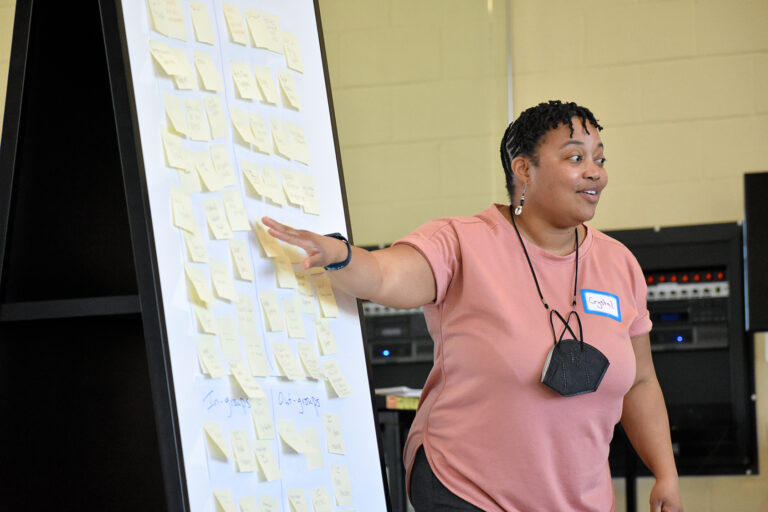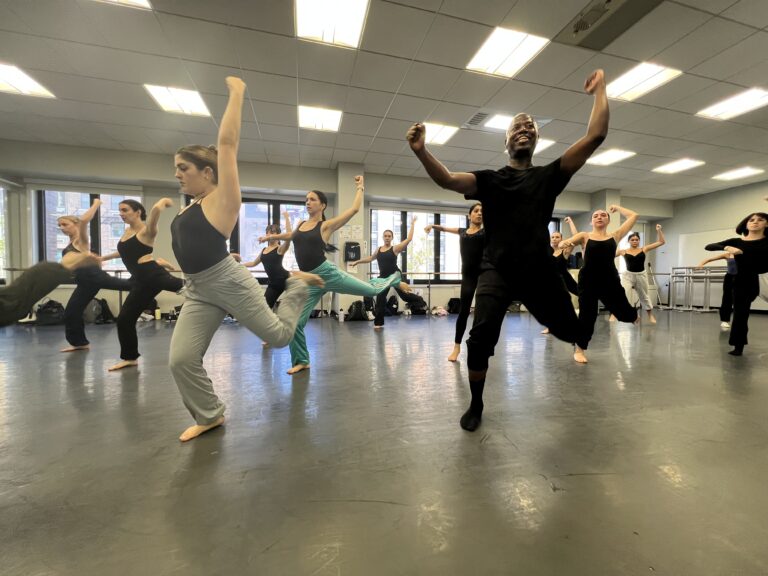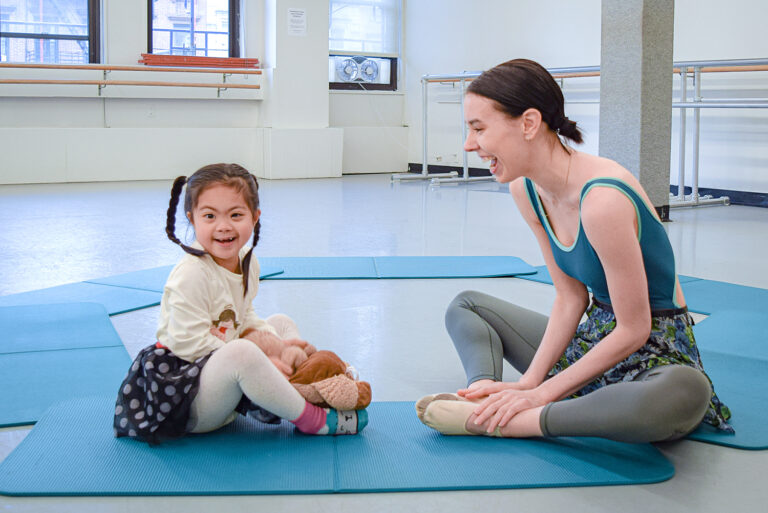
Alwin Nikolais, or “Nik,” as he was known, considered himself an artistic polygamist. He is best known for his multimedia approach to dance, using electronic scores, special-effects lighting and elaborate costumes and props in his pieces. But he also paved the way for abstract modern dance. Before him, modern dance explored emotional and psychological states, as in the work of Martha Graham. Nikolais introduced movement for movement’s sake.
Born in Connecticut to a German mother and Russian father, Nikolais was a pianist first. He started piano lessons at age 5, and by 16, he was the organist for a movie house, improvising music to silent films. He discovered dance by accident in his early 20s: After seeing Mary Wigman perform in New Haven, he contacted a student of hers, curious about the percussion Wigman used for accompaniment. The student convinced Nikolais to study dance.
Three summers at Bennington, 1938–40, led him to Hanya Holm, who became one of his most influential teachers. After a brief interruption in his training when he joined the army for World War II, Nikolais moved to New York City. He also became Holm’s assistant at her Colorado College summer residencies, where he met Murray Louis. Later on, Louis and Nikolais would form a dance company together, as professional and romantic partners.

Nikolais got the chance to develop his own choreographic voice when he became director of the run-down Henry Street Playhouse in NYC in 1948. He would stay there for 22 years, developing his works, vision and pedagogy. Though his productions always included intricate costuming and futuristic sound and lighting, Nikolais defined dance as pure motion—abstract movement without an underlying storyline or message. His works and classes revitalized the Playhouse.
Nikolais was an international success, too, particularly in France. In 1978, he was invited to form the Centre National de Danse Contemporaine in Angers. When he died at 83, Nikolais was buried in Paris’ Père Lachaise Cemetery. DT
Style
In his classes, Nikolais encouraged his students to find their own artistic voices, and as a result, many became choreographers: Phyllis Lamhut and the founders of Ririe-Woodbury Dance Company, Shirley Ririe and Joan Woodbury. Improvisation was an important part of class, too. In Nikolais’ choreography, pedestrian movement held more power than feats of technique.
A scene from Tensile Involvement, which later became a section in the larger work Masks, Props and Mobiles

The Work
Tensile Involvement (1953) was Nikolais’ first piece to incorporate every element of what he called “total dance theater”: light, sound, costumes and props (in this case, mirrors to multiply the dancers). An excerpt is performed during the opening credits of Robert Altman’s 2003 dance film The Company.
Pond (1982) In this dance, the image of a giant lily pad is projected onto the back of the stage. The dancers sit on raised, cushioned platforms, so that they appear to glide around the stage like water lilies.
Movement Vocabulary
Nikolais required three key performance concepts of his dancers:
- Totality: Being completely immersed in the piece
- Immediacy: Being present and ready, 100 percent of the time
- Decentralization: Allowing the center or focus of a dance to be anywhere at any time, rather than one fixed point
Fun Facts
- Because much of his work required detailed operation of multimedia, Nikolais would often choreograph specific entrances and exits so that the dancers themselves could run the light and sound cues.
- Nikolais was so popular in France that he is referred to as the American father of French modern dance.

The Legacy Lives On
Companies like Pilobolus and MOMIX are directly influenced by Nikolais’ multimedia work. In 2003, the Nikolais/Louis Foundation for Dance, Inc., partnered with Salt Lake City–based Ririe-Woodbury Dance Company (whose founders were Nikolais students) to make Nikolais’ work part of the company’s repertory. Former Nikolais dancer Alberto del Saz currently directs the Nikolais/Louis Foundation. The Henry Street Playhouse in NYC, revitalized by Nikolais, is now part of the Abrons Arts Center, a venue which continues to produce experimental dance and theater.
Resources
“The Nikolais/Louis Dance Technique: A Philosophy and Method of Modern Dance,” by Murray Louis and Alwin Nikolais, 2005
“Alwin Nikolais: Influential American choreographer and teacher,” by Carrie Stern, Dance Teacher, March 2008
Online
The Nikolais/Louis Foundation for Dance: nikolaislouis.org/educational-materials
Dance Heritage Coalition: “America’s Irreplaceable Dance Treasures”: danceheritage.org







